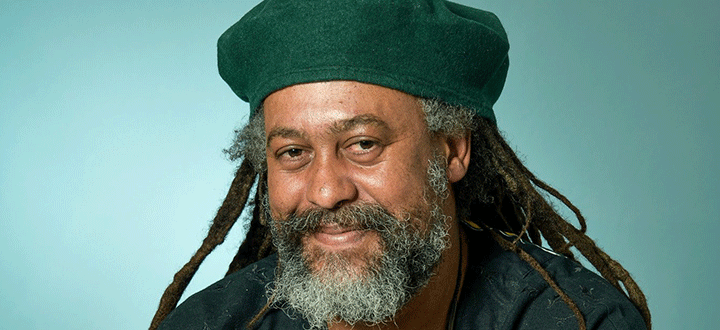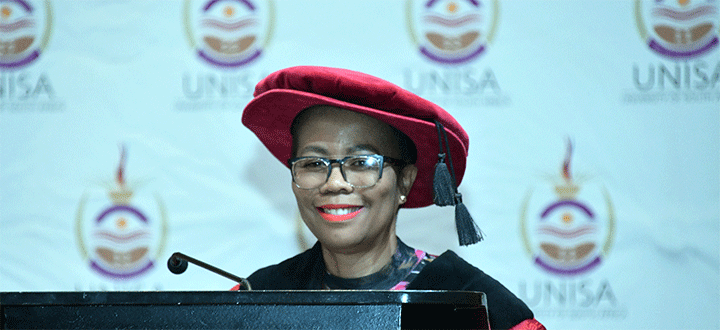Alumni
In conversation with an award-winning author, academic and Unisa alumna from Costa Rica
The Unisa Alumni Relations Office recently interviewed Dr Natasha Gordon-Chipembere, an esteemed writer and professor from Costa Rica who obtained her PhD from Unisa. She is the author of Finding La Negrita and Representation and Black Womanhood: The Legacy of Sarah Baartman. In the interview she speaks about her personal life, her academic and professional journey, and her views on the life of Sarah Baartman.
Who is Dr Natasha Gordon-Chipembere?

Dr Natasha Gordon-Chipembere
Gordon-Chipembere is a wife to Masauko Chipembere and a mother to two beautiful children; Jabulani who graduated from Brock University in Ontario, Canada, and Aminata, who is studying at the University of British Columbia in Vancouver, Canada. She and her family moved from New York to Costa Rica, her mother’s homeland, a little over 10 years ago.
Gordon-Chipembere describes herself as a "work in progress" and wears many hats. She has 27 years of teaching experience and is currently a professor of African diasporic literature. She focuses on slavery and agency in slavery.
She completed her PhD at Unisa in 2007 and subsequently worked fulltime as a professor at the City University of New York for 12 years. One of the reasons she relocated to Costa Rica was her commitment to her creative self.
Finding La Negrita is a historical fictional novel that tells the story of Costa Rica’s Black Madonna during the colonial era in the 17th century. The book was published in 2022 and has done well globally. For the past 20 years, Gordon-Chipembere has been running an independent editing business, where she is a developmental editor and writing coach.
Her love for writing
Gordon-Chipembere was raised by protective immigrant parents who prioritised their children’s education. Her mother (a retired Spanish professor) and her father (a retired postal services manager) sent her and her siblings to private schools to get a good education, and that shaped her future.
She says that as a child, she used to visit the library once a week and fell in love with reading, which ignited her love for writing. At the age of seven, she wrote a short story inspired by the book Little Women written by Louisa May Alcott. From that moment she knew that writing was what she wanted to do. Her love for reading and writing directed her life journey and her academic career.
Her journey with Unisa
Gordon-Chipembere says that her journey with Unisa was a very beautiful one. The decision to do a PhD at Unisa was an obvious choice since the university offers a PhD in English, which she completed under the supervision of Dr Pamela Ryan.
During her studies, she returned to New York to do field work for her research. The focus of her work was female circumcision and Sarah Baartman. Her argument was that the language used in the Sarah Baartman narrative in terms of scientific racism, continues in contemporary times with the way in which circumcised African women are represented. She focused on how these ideas granted a permissiveness to portray African/African-descended women as hypersexual, incomplete and monstrous. Her studies proved that the way circumcised women speak about themselves has nothing to do with these negative stereotypes.
She describes her supervisor, Dr Ryan, as an amazing person and the sole reason she has her PhD. They had a very close relationship and shared many interests beyond the academic journey.
The lesson people can learn from the story of Sarah Baartman
Gordon-Chipembere says: "I want people to know that Sarah Baartman was a woman who, in the most oppressive circumstances, found actual agency every single day. Even when she was treated poorly in London and Paris and dehumanised, she still made a choice to wake up every day and be in her life until she died."
She says that the contemporary enactment of Sarah Baartman’s body (which disturbs her deeply), with people trying to emulate her by padding their bodies, only perpetuates the image of Baartman as seen through the people who exploited her. The archival material is from Europeans who considered her a monster. Beyond her skeleton, no one really knows what Sarah Baartman looked like and every image we have seen of her is essentially a caricature created by people who oppressed her.
Gordon-Chipembere says that all we can learn from these images is about people who looked at her, who imagined her and perceived her as sub-human. What is known about her is that she was from South Africa, and from the Quena/Khoikhoi people. Subsequent to her return and burial in South Africa in 2002, we can see from her skeleton that she was a short woman. She says that people who try to depict Sarah Baartman today do not understand that what is most important about Baartman is her legacy. What can we learn from her story? How does it inform the ways that black women in the world are seen and represented today? Who protects the bodies of black women? Baartman’s story is a narrative of exploitation of a black woman’s body. Gordon-Chipembere recommends the following response to this: "Let us be more tender around her story. She is one of many, it is just that she shows up in the archives and we only know a little about her. When we are gentle with Baartman, we can apply an ethic of care to how black women are represented today."
Advice for students who are studying through online platforms
Her words of advice for current Unisa students are: "Whatever you do, read." Research is finding that it is very hard for young people to read nowadays. She says that she finds this challenge in her literature classes with her students – they don’t like reading.
She advises students to build a support system and to find people to connect with who are also on the online learning journey. By doing this, students will have a platform for accountability. She advises students to participate in Unisa’s orientation process and to visit the library because there is no shame in asking for help. "Talk to your professors, and find an accountable partner you can connect with and maybe meet up with a few times a week to help cope with studies," she says.
* By Nthabiseng Majeng, Intern: Unisa Foundation and Alumni Relations, Department of Institutional Advancement
Publish date: 2024-12-04 00:00:00.0


 President Ramaphosa appoints Unisan to the CRL Rights Commission
President Ramaphosa appoints Unisan to the CRL Rights Commission
 Unisa VC appointed for second term, looks back on the 2024 academic year
Unisa VC appointed for second term, looks back on the 2024 academic year
 From passion to profession: Sonto Mthwane's journey in tourism management
From passion to profession: Sonto Mthwane's journey in tourism management
 Uniting for open knowledge
Uniting for open knowledge
 Unisa to partner with Government to tackle water, energy and infrastructure challenges
Unisa to partner with Government to tackle water, energy and infrastructure challenges